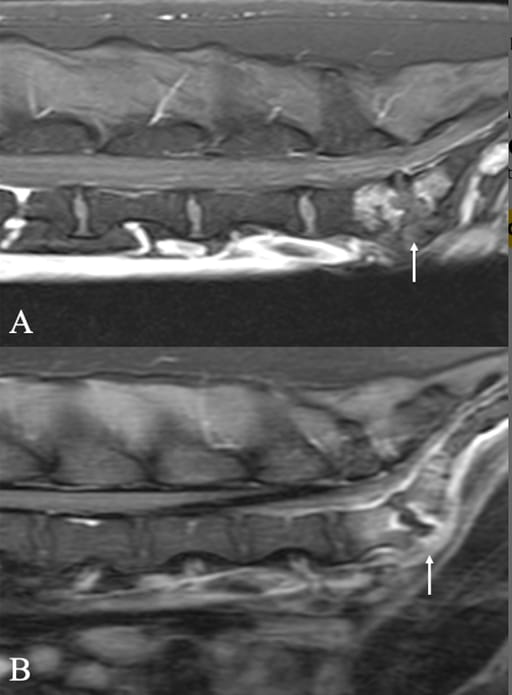- Veterinary View Box
- Posts
- Keep brucella on your ddx
Keep brucella on your ddx
J Vet Intern Med. 2025
Courtney M Moeller 1, Joseph W Bartges 2, Kelsey D Brust 3, Philip H Kass 4, Rebecca F Kelly 2, Erin W Lashnits 5, Chai-Fei Li 3, Lindsay K Merkel 6, Jessica C Pritchard 5, Jane E Sykes 1
Background
Brucella canis is a zoonotic bacterial pathogen that causes reproductive and systemic disease in dogs. Early identification is critical to prevent transmission and manage outbreaks, but clinical suspicion is often low due to nonspecific signs. This study aimed to identify clinical features and diagnostic patterns that distinguish dogs with confirmed B. canis infection from those with similar clinical presentations but negative test results.
Methods
A retrospective analysis was conducted on 66 dogs tested for B. canis by serology or culture. Cases were classified as positive or negative based on confirmatory test results. Clinical, laboratory, and imaging data were analyzed to identify variables associated with a positive diagnosis. Statistical comparisons were made using logistic regression and Fisher’s exact test.
Results
Dogs with B. canis were more likely to be intact, younger, and from breeding or shelter backgrounds. Common presenting signs included discospondylitis, orchitis/epididymitis, infertility, and lymphadenopathy. Positive dogs had higher rates of reproductive tract abnormalities, discospondylitis (60% vs. 15%), and positive blood cultures. Leukocytosis and elevated globulins were more frequent in positive cases. Logistic regression identified intact status, origin from a shelter/breeding facility, and imaging-confirmed discospondylitis as significant predictors.
Limitations
This was a retrospective study with potential selection bias. Confirmatory testing was not standardized, and serologic tests have variable sensitivity/specificity. The sample size was relatively small and predominantly represented the southeastern United States.
Conclusions
Certain clinical features—especially intact status, origin from high-risk environments, and discospondylitis—should heighten suspicion of B. canis infection. Early recognition based on these criteria can guide testing, reduce transmission risk, and prompt appropriate isolation and management. These findings support a more targeted diagnostic approach in dogs with suggestive signs.

Sagittal post-intravenous contrast MRI images showing central lytic lesions in dogs with lumbosacral discospondylitis (arrows). (A) Brucella case. T1-weighted Dixon (water only, fat suppressed) sequence. (B) Control dog. T1-weighted FLAIR sequence.
How did we do? |
Disclaimer: The summary generated in this email was created by an AI large language model. Therefore errors may occur. Reading the article is the best way to understand the scholarly work. The figure presented here remains the property of the publisher or author and subject to the applicable copyright agreement. It is reproduced here as an educational work. If you have any questions or concerns about the work presented here, reply to this email.